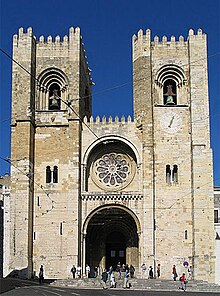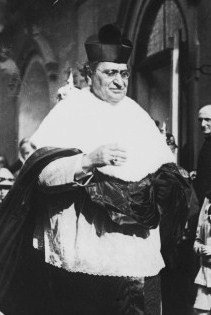
The Portuguese Catholic Church, or Catholic Church in Portugal, is part of the worldwide Catholic Church in communion with the Pope in Rome, under the Portuguese Episcopal Conference. The Catholic Church is the world's largest Christian organisation. It is Portugal's largest religion and its former state religion, and has existed in the territory since the Iberian Peninsula was ruled by the Roman Empire.
Portugal has a long music history, beginning around the year 600 C.E, which accompanied and strongly contributed to the development of the music history in Europe.
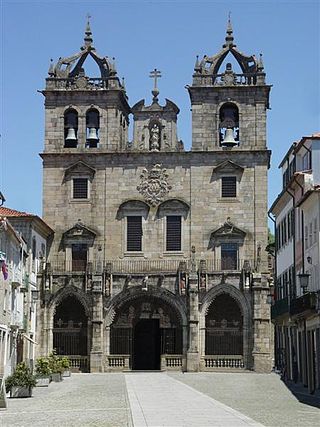
The Archdiocese of Braga is a Latin Church ecclesiastical territory or archdiocese of the Catholic Church in Portugal. It is known for its use of the Rite of Braga, a use of the liturgy distinct from the Roman Rite and other Latin liturgical rites.

The Diocese of Coimbra is a Latin Church diocese of the Catholic Church in Coimbra, Portugal. It is a suffragan of the Archdiocese of Braga.

The Diocese of Porto (Oporto) is a Latin Church diocese of the Catholic Church in Portugal. It is a suffragan of the archdiocese of Braga. Its see at Porto is in the Norte region, and the second largest city in Portugal.

Aires de Ornelas e Vasconcelos was the Roman Catholic Archbishop of Goa.

The Roman Catholic Diocese of Funchal is a Latin Church ecclesiastical territory or patriarchal archdiocese of the Catholic Church in Portugal. It was originally created on 12 June 1514 by the papal bull Pro excellenti præeminentia from Pope Leo X, following the elevation of Funchal from a village to the status of city, by King Manuel I of Portugal. The diocese was a suffragan of the Archdiocese of Lisbon.
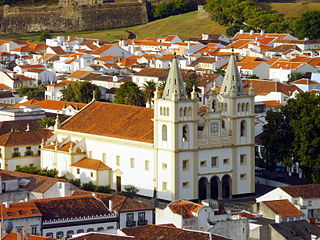
The Diocese of Angra is a Latin Church diocese of the Catholic church in the Portuguese archipelago of the Azores. The see is located in Angra do Heroísmo, in the Terceira island. The current Ordinary is Armando Esteves Domingues.

The Archdiocese of Évora is a Latin Church diocese of the Catholic Church in Portugal with Évora Cathedral as its see. It has as suffragans the diocese of Beja and diocese of Faro. The current archbishop of Évora is José Francisco Sanches Alves.

The Diocese of Guarda is a Latin Church diocese of the Catholic church in central eastern Portugal, a suffragan in the ecclesiastical province of the Latin Patriarchate of Lisbon in southern Portugal.

The Roman Catholic Metropolitan Archdiocese of Goa and Daman encompasses the Goa state and the Damaon territory in the Konkan region, by the west coast of India. The ecclesiastical province of Goa and Damaon includes a suffragan diocese, the Sindhudurg Diocese that comprises the Malvani areas of. The Archbishop of Goa also holds the titles of Primate of the East and Patriarch of the East Indies, also hold the title of the Syrian Catholic Primate of the Archdiocese of Cranganore. The beginnings lie in the Padroado system of Portuguese Goa and Damaon, in the early 1900s the primatial see was transferred back to the Sacred Congregation for the Evangelisation of Peoples, as the Padroado system of the Indo-Portuguese era was being dismantled.

The Patriarch of Lisbon, also called the Cardinal-Patriarch of Lisbon once he has been made cardinal, is the ordinary bishop of the Archdiocese of Lisbon. He is one of the few patriarchs in the Latin Church of the Catholic Church, along with the Patriarchs of Venice, the East Indies, and Jerusalem.

The Cathedral of Angra do Heroísmo is a Portuguese 16th-century cathedral located in the civil parish of Sé, in the municipality of Angra do Heroísmo, on the island of Terceira in the archipelago of the Azores.

Manuel José Macário do Nascimento Clemente, GCC, officially Manuel III, is a Portuguese prelate of the Catholic Church. He was the Metropolitan Patriarch of Lisbon from 2013 to 2023 and a cardinal since 14 February 2015. He has been a bishop since 1999 and was Bishop of Porto from 2007 to 2013.
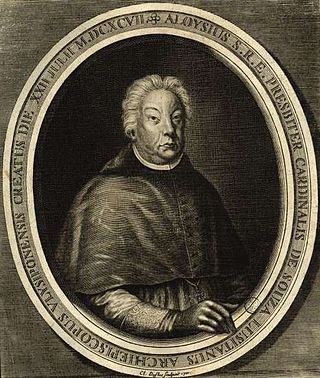
Luís de Sousa was Archbishop of Lisbon. He was a major figure of the second half of the seventeenth century, serving as Royal Chaplain and Councillor of State of Portugal, later being created a Cardinal by Pope Innocent XII in 1697.

Tomás de Almeida was the first Patriarch of Lisbon, formerly Bishop of Lamego and later of Porto. Pope Clement XII elevated him to the cardinalate on 20 December 1737.
DomTeodoro de FariaGOIH, is Madeiran Catholic clergyman who was Bishop of Funchal between 1982-2007 and is currently Emeritus Bishop of the same diocese.

The Missal of the Academy of Sciences is a notable Portuguese 17th-century Roman Pontifical codex, profusely illuminated by Estêvão Gonçalves Neto.
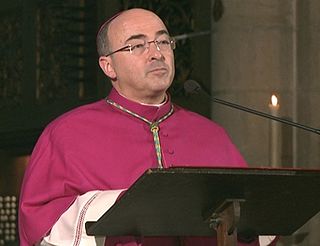
DomNuno Brás da Silva Martins, most often referred to simply as DomNuno Brás, is a Portuguese Catholic bishop and current bishop of Funchal, Madeira.
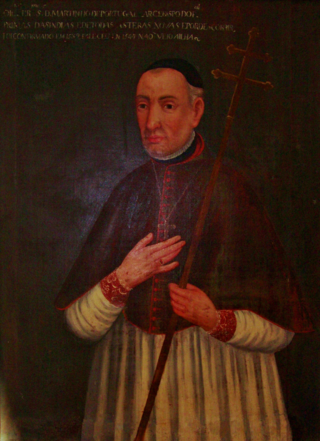
DomMartinho de Portugal, also known as Martinho of Portugal, was a Portuguese archbishop, the only Archbishop of Funchal, holder of the largest Catholic jurisdiction in the world, ever created, which had as suffragans the dioceses like Angra do Heroísmo, São Tomé, Santiago and Goa. From its area, the future Diocese of São Salvador da Bahia, would be dismembered and created in 1551.
